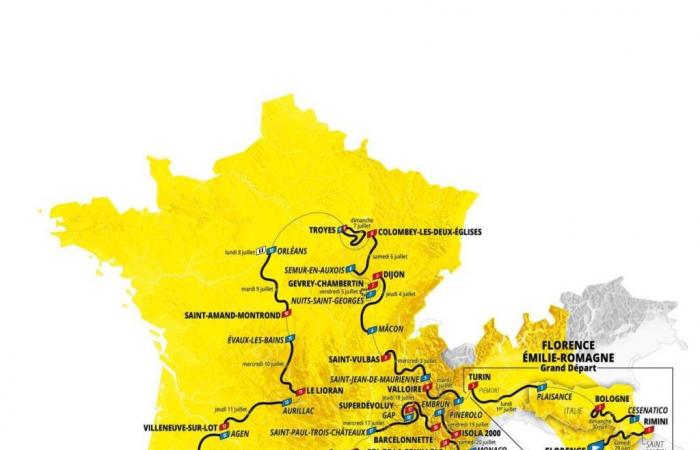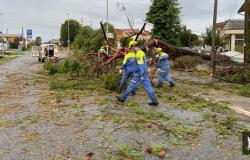The Tour de France, the most prestigious and iconic cycling race in the world, is not just a sporting competition: it is an event that intertwines history, culture and passion, leaving an indelible mark on the cities and towns it passes through. Every summer, the Tour de France transforms ordinary streets into epic stages of struggle, victory and defeat, engaging millions of spectators and fostering a sense of collective unity and celebration.
A Historical and Cultural Heritage
Born in 1903, the Tour de France has become a true monument of international cycling. Every year, the route of the race is different, but always designed to enhance the scenic and cultural beauty of France and, occasionally, of the host countries of the first stages, as happened this year with The Great Departure from Italyfrom Florence, to be precise.
The cities that host the stages of the Tour enter into a sort of historical brotherhood, sharing the glory and honor of being part of this legendary competition.
Economic and Tourist Impact
The passage of the Tour de France represents a significant economic opportunity for cities and the host villages. Hotels are filled with visitors, restaurants are thriving and shops are seeing increased sales. The Tour’s global media coverage provides an unrivaled showcase of local beauty, attracting tourists looking to discover the regions seen on TV. Additionally, the infrastructure needed to host the race often leads to permanent improvements in streets and public facilities, benefiting communities in the long term.
For Alessandria, which has a flying finish line near Borsalino, it is a rare and unique opportunity. Complaining about traffic problems would seriously mean not having understood anything about what is happening.
Alessandria and Tortona: Historic Stages of the Tour de France
This year, on July 1st, the Tour de France will pass through two Piedmontese cities rich in history and culture: Alessandria and Tortonaand then fly quickly to Turin and it won’t be a ride like a simple Giro d’Italia, it’s a completely different thing, go to the streets two hours before and you’ll notice the difference for yourself.
These stages are not only an opportunity to highlight the beauty and heritage of these cities, but also to celebrate one of the greatest legendary Italian cyclists: Fausto Coppi.
Alexandria: Crossroads of Culture and History
Alessandria, with its historic architecture and traditions, offers a fascinating backdrop for cyclists and spectators of the Tour. The city is known for being the city of Borsalino and for its many historical monuments, including the Citadel, one of the largest and best preserved fortifications in Europe. The passage of the Tour de France will be an event that will strengthen the link between the city and cycling, celebrating the passion for this sport that is deeply rooted here.
Tortona: The Symbolic Cima Coppi
In Tortona, a place of particular importance will be the hill which symbolically will become the “Cima Coppi”. Despite its modest height of only 190 meters, this hill will represent a tribute to the great Fausto Coppi, the “Champion“, considered one of the greatest cyclists in the history of the Tour de France and world cycling. Tortona will be transformed into a sanctuary for all cycling enthusiasts, honoring Coppi’s memory and his legendary career.
A popular festival
The Tour de France is much more than a race; it is a popular celebration. During the three weeks of the competition, cities come alive with celebrations, cultural events and parallel sporting events. The streets fill with enthusiastic spectators, families and cycling enthusiasts, creating a unique atmosphere of celebration and camaraderie. Children wave flags, adults organize picnics and everyone comes together to cheer on their favorite cyclists, making the Tour an inclusive and joyful event.
Enhancement of the Territory
Each stage of the Tour de France highlights the natural and architectural heritage of the regions it passes through. From the majestic Alps to the picturesque countryside, from medieval villages to modern metropolises, the Tour celebrates the diversity and beauty of the French and, this year, Italian territory. International television coverage showcases castles, cathedrals, vineyards and historic monuments, promoting local culture and traditions to a global audience. This enhances the territory and can stimulate investment in conservation and sustainable tourism.
An Enduring Legacy
The legacy of the Tour de France goes beyond the length of the race itself. Many cities and villages that hosted stages of the Tour keep the memory of the event alive with museums, monuments and cycle tourism routes. These elements become permanent attractions that continue to attract visitors and celebrate the history of cycling. Furthermore, the Tour inspires new generations of cyclists, promoting an active and healthy lifestyle.
In the end, The Tour de France is not just a competition, but an epic tale that is renewed every year. Imagine cyclists speeding through the breathtaking landscapes of Piedmont, sweat on their foreheads and determination in their eyes. Think about when you are older and tell your grandchildren about when the Tour passed through their city, or about young people inspired to get on a bicycle for the first time. The Tour de France unites past and present, sport and culture, in a timeless celebration that reminds us of humanity shared through effort, beauty and the passion for cycling.
The Tour will pass with all its festive and long caravan, through the streets of Alessandria and Tortona, on Monday 1st July 2024
The Tour de France 2024 crosses Alessandria and Tortona: Discover the Incredible Secret of these two cities!
I like:
I like Loading…






